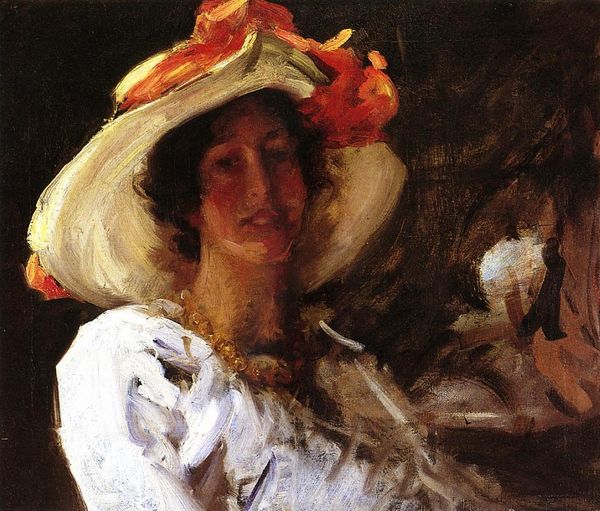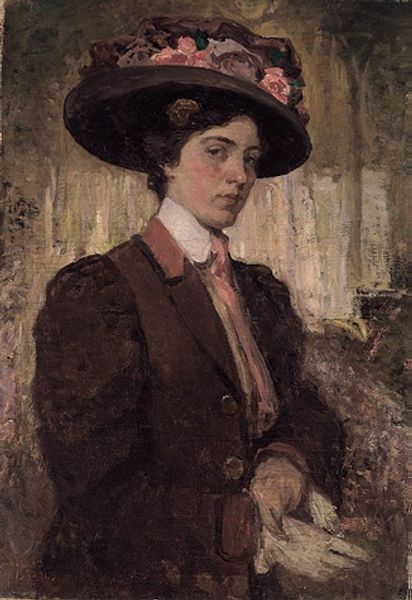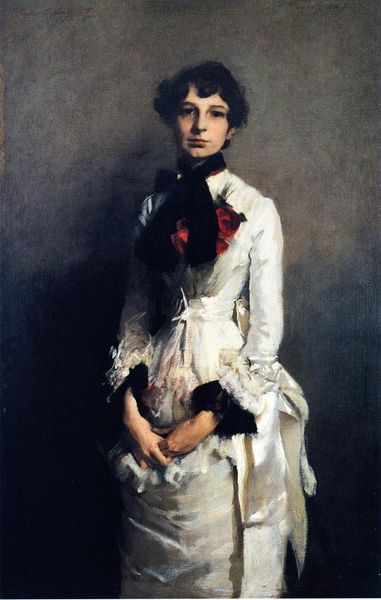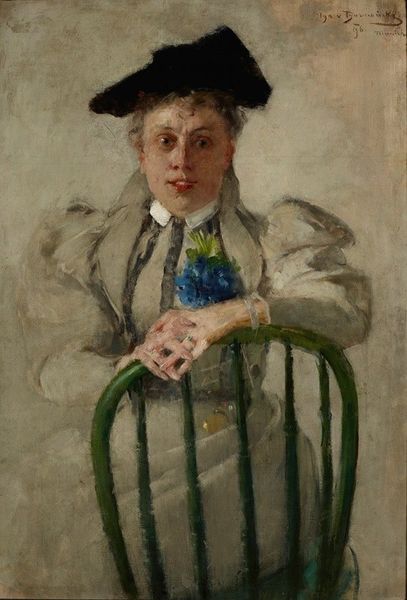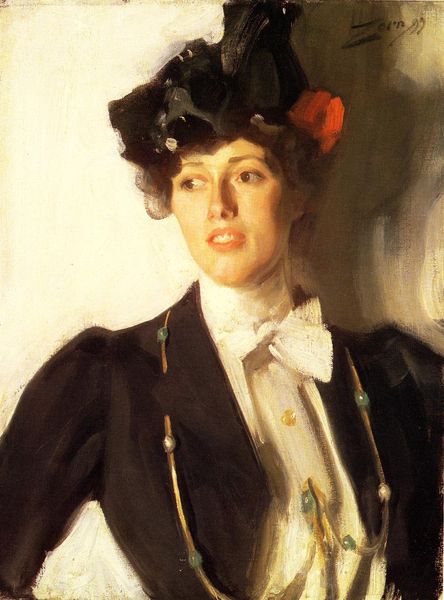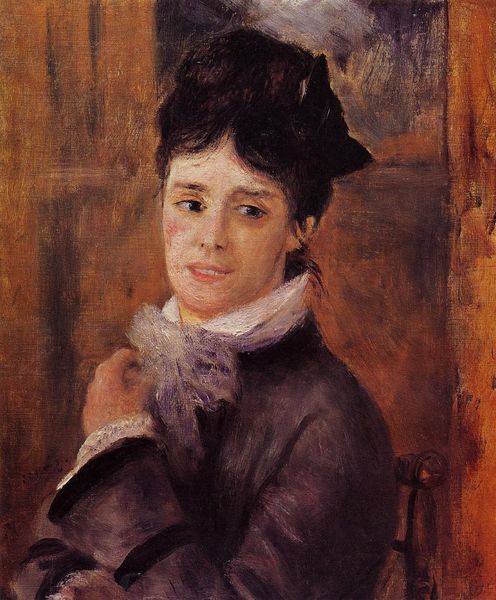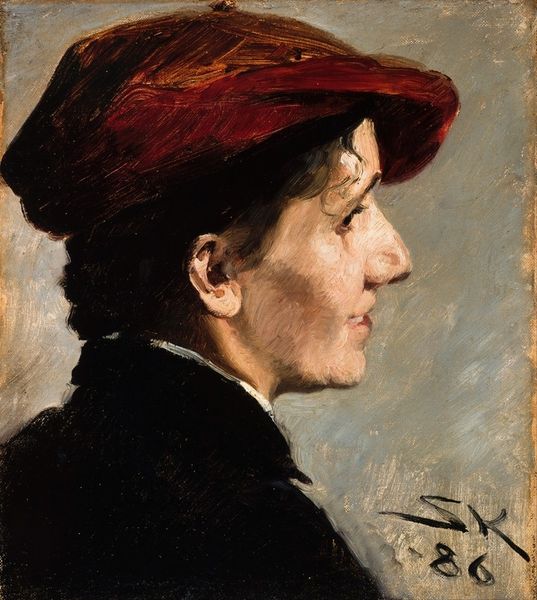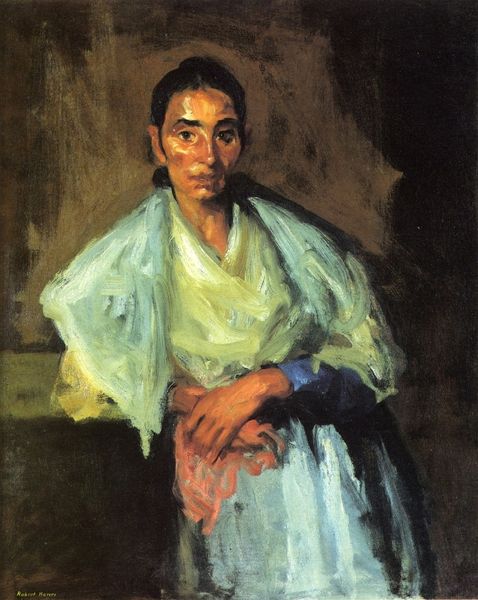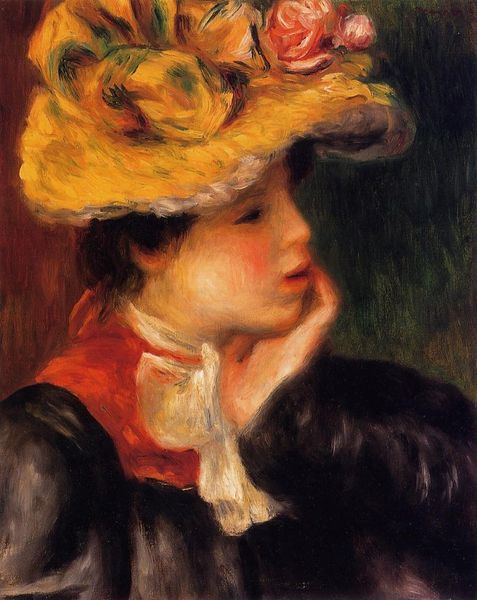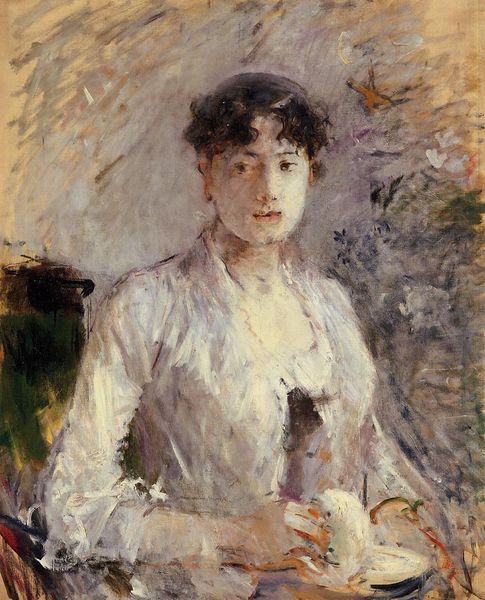
painting, oil-paint, impasto
#
portrait
#
painting
#
impressionism
#
oil-paint
#
figuration
#
oil painting
#
impasto
#
realism
Dimensions: 48.3 x 73.7 cm
Copyright: Public domain
Editor: So, here we have William Merritt Chase's "Woman in White," an oil painting, possibly done in impasto. What strikes me is how the brushstrokes give texture to the gown. It feels so tactile. How would you interpret the artist's intentions with these distinct strokes and material choice? Curator: I see this less as a purely aesthetic choice, and more about understanding the means of production and labor embedded in the artwork. The heavy impasto of the white dress, in contrast to the darker background, becomes a focal point of the artist's labour, literally showcasing the thickness and density of paint used. But think, what social narratives were being built around this representation of the sitter's garment? Editor: So, rather than seeing the brushwork as purely decorative, it's a demonstration, even celebration, of the labor and materiality itself? What does it tell us about societal values or the consumerism back then? Curator: Precisely! It reflects an increasing awareness, at the turn of the century, of the value we place on material goods and the process of obtaining those objects. The ‘Woman in White' is an intriguing symbol of status and the labour involved in producing such luxurious items and representing ideal femininity through these objects of consumption. And furthermore, can be connected with the industrial boom. Editor: I never really thought about it in terms of labor. Curator: Now you see how we can dig deeper! Considering process and production alongside visual qualities unlocks so much more! Editor: That makes so much sense! Seeing it as not just the 'what' but the 'how' and the 'why' behind the materiality of the painting is really enlightening. Thank you!
Comments
No comments
Be the first to comment and join the conversation on the ultimate creative platform.
